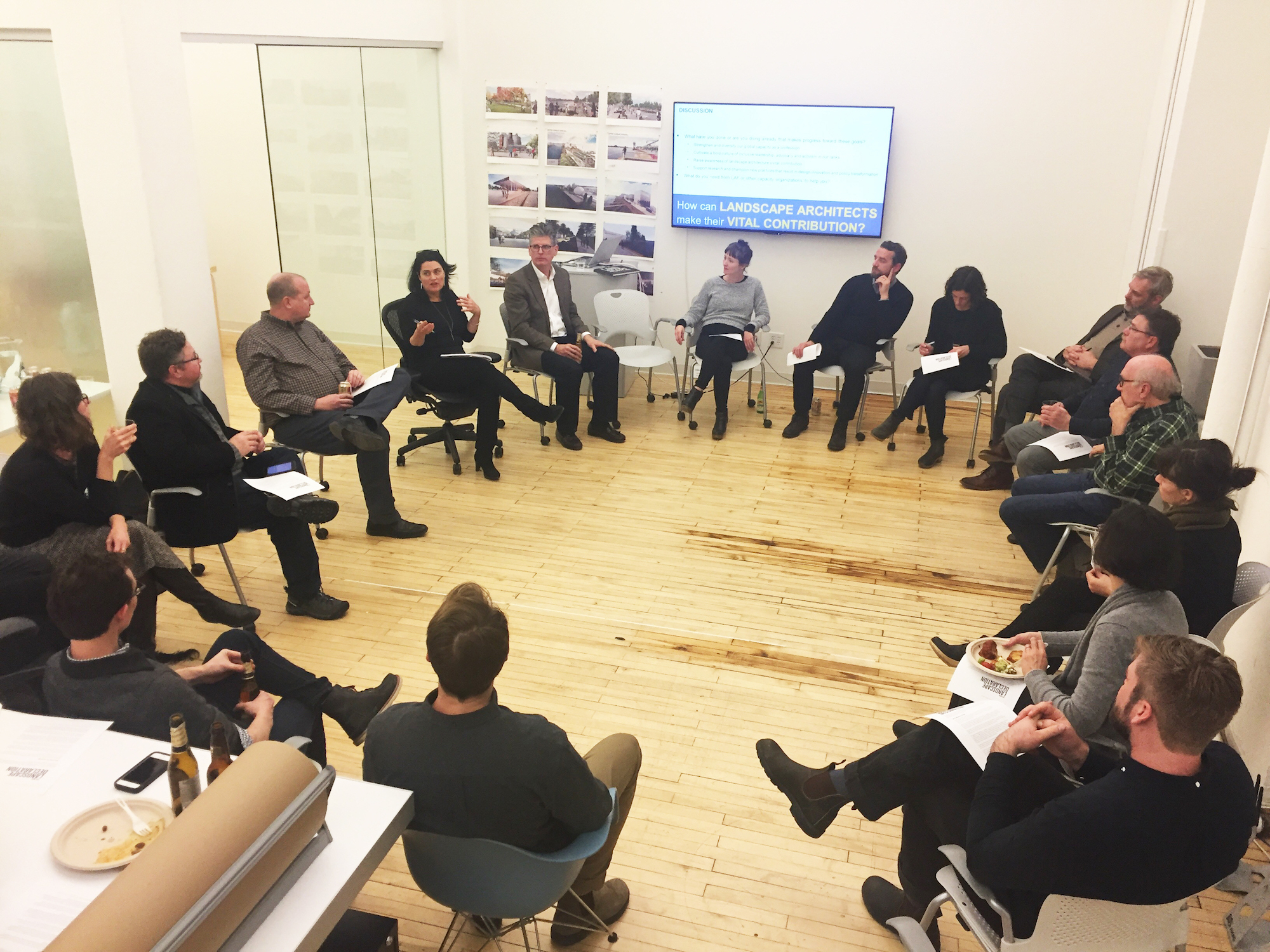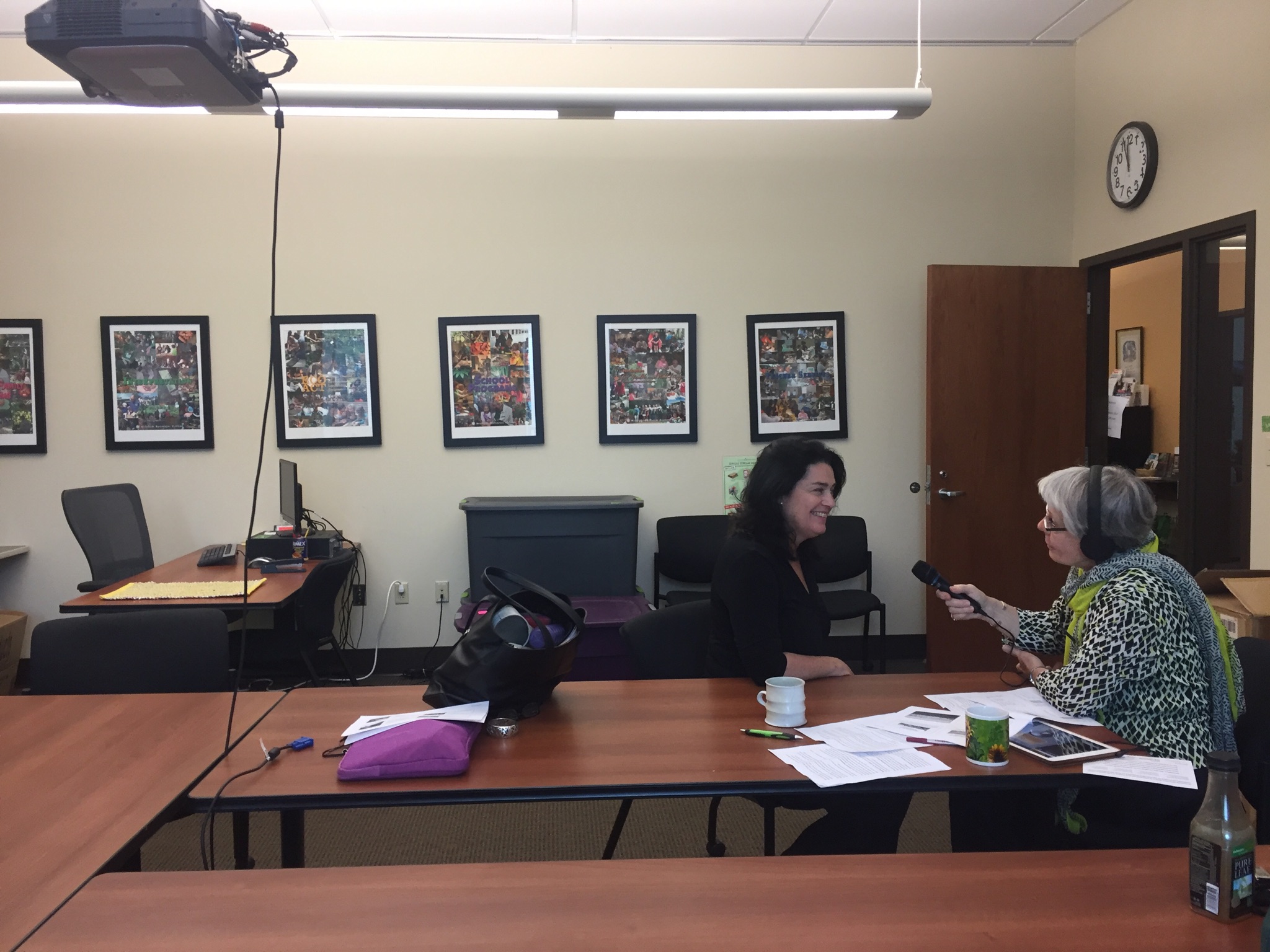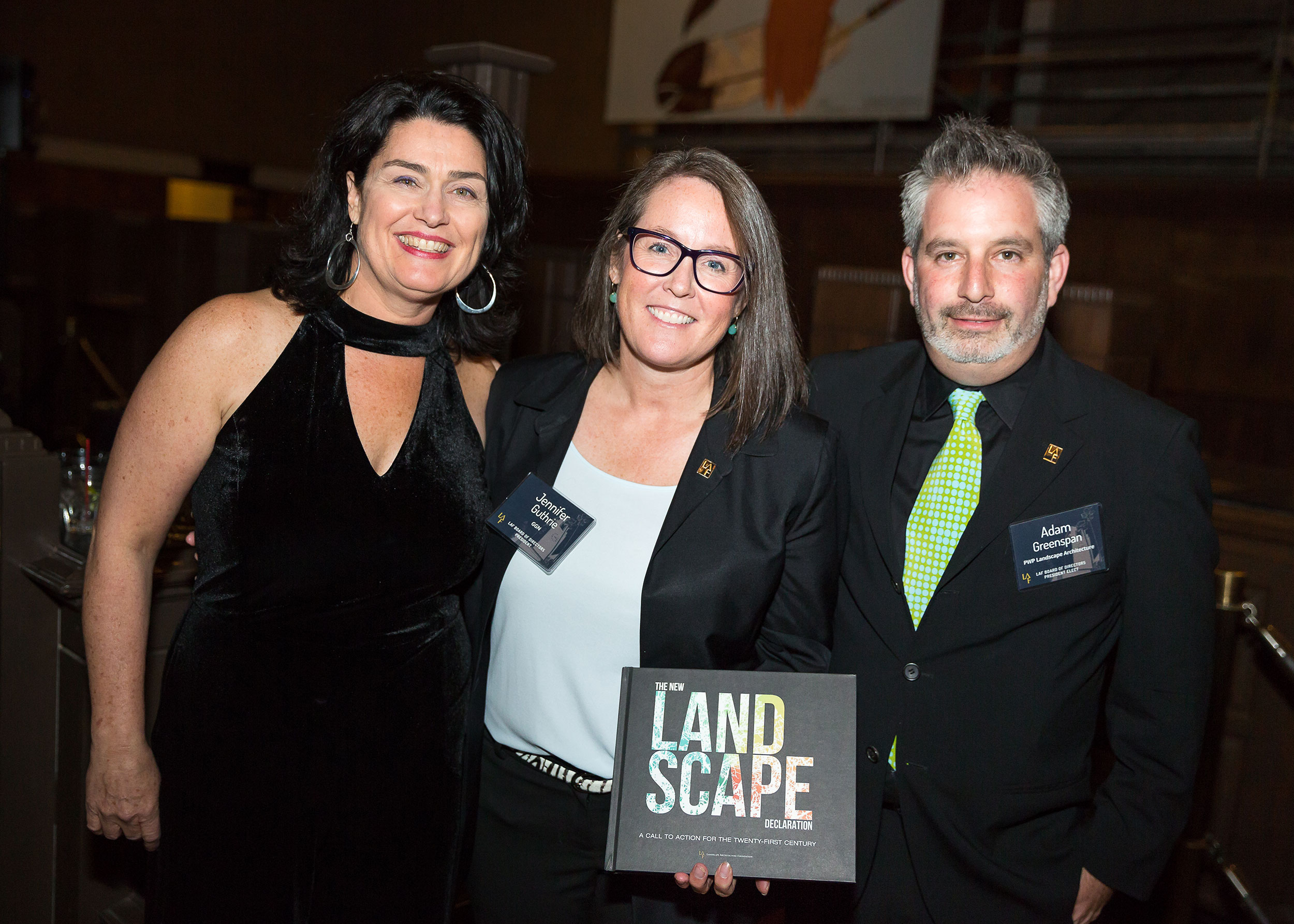This month we are spotlighting Barbara Deutsch, a 1997 graduate of the MLA program. She currently lives in Washington D.C. working as the CEO of the Landscape Architecture Foundation (LAF).
UWLA: What does a typical day look like in your position?
BD: No two days are the same but there are cyclical work flows during the year to lead the organization to align decision-making by a board of directors with programs and operations. My position requires me to run a business by making a profit as well as showing a return on investment toward achieving the mission to all stakeholders. The LAF is a nonprofit 501(c)(3) charitable organization with a mission to support the preservation, improvement, and enhancement of the environment by increasing the influence of landscape architects through investments in research, scholarship, and leadership programs.
We have a staff of six highly talented, passionate people—four are landscape architects, one is an environmental engineer, and one has a business background. We work in downtown Washington D.C. and I ride my bike to work 4-5 miles each way most days of the year.
I spend about two thirds of my time in the office, working with staff on programs, strategy, fundraising, operations and evaluation. The other third of my time is spent speaking at conferences and visiting landscape architecture firms, like-minded nonprofit organizations, and agencies to figure out if and how we can work together towards achieving our shared interests and respective missions. I love learning what others are doing and promoting what we do as landscape architects to a larger audience.
 Facilitating a discussion about the expanding role of landscape architects.
Facilitating a discussion about the expanding role of landscape architects.
 Welcoming over 700 to LAF’s 2016 Summit on Landscape Architecture and the Future.
Welcoming over 700 to LAF’s 2016 Summit on Landscape Architecture and the Future.
UWLA: We are interested in the wide breadth of professional activities in which our alumni engage. What has been your professional journey from graduation to today, and what types of projects you have worked on—perhaps in your case, campaigns and building relationships?
BD: Post-graduation, I worked in Hong Kong with a private landscape architecture firm for two years. I was interested in growth issues– that as long as there are people, they need a place to live, work, rest, and play and how fun would that be to design and build places that were better for people and better for the environment. In Seattle I had volunteered for my neighborhood planning process– where would we put another 1,000 people in 20 years and do the master plan. In Hong Kong I was on a multidisciplinary core team for Government designing a new town to accommodate 200,000 people within 10 years. The change in scale was powerful. I also worked on infrastructure plans to develop road and transit corridors, conservation strategies to protect areas of high scenic and landscape value, tree surveys, and a visitor signage strategy with the Hong Kong Tourist Association that was right that has been implemented throughout Hong Kong.
After Hong Kong I taught in the landscape architecture department at the University of Washington for two years and helped the department develop a strategic plan and an identity focused on urban ecological design. I loved teaching and learned so much from students and other faculty and delight in seeing UW alumni doing great work all over the globe!
I then moved to D.C. to work in the nonprofit sector, beginning with a new environmental non-profit organization called Casey Trees. We worked to develop a GIS inventory of 140,000 street trees to give to the city as a management tool. We did this through a citizen-based data collection model, using a GIS enabled handheld device to evaluate the health of the street trees and identify opportunities for planting. This was before smart phones! 35 college students, community volunteers, and high school students helped collect this information; over half were landscape architecture students who were passionate about nature and also about understanding how the city works from the ground up and good with working with people.
I worked to build the first green roof on a high elevation commercial building in D.C. This led to a research grant with the EPA called the Green Build-out Model which quantified the stormwater management benefits of trees and green roofs at different coverage scenarios in DC. I worked with environmental engineers who did the modeling for the $2.5 billion underground storm water tunnels that were coming to D.C. What would happen if we put a tree or a green roof wherever we could? Could that make a difference in managing our storm water, and offset investment in these tunnels, which don’t provide all the multiple benefits that green infrastructure solutions do? We did the modelling, and it helped inform stormwater planning here in D.C.
Later on, I consulted with a charitable organization in London and worked with developers to implement a sustainability action plan for BioRegional’s OnePlanet program. OnePlanet defines sustainability as an ecological footprint of one planet’s worth of resources and provides a method for achieving it. In North America we operate at 5+ planet’s worth of resources, in Europe it’s 3+ planets, in United Arab Emirates it’s 7+ planets. We only have one planet and this program provides a method to live within our fair share. There are ten principles with which the developer and design teams set stretch targets such that when the project is built and operating, it uses up to one planet or less of resources.
This experience, along with my landscape architecture experience, helped inform the LAF Landscape Performance Series: the strategic long-term research initiative here at LAF to quantify environmental, social, and economic benefits of exemplary projects and show the value of sustainable landscape solutions. The transformation we are achieving is to integrate the basic business practice of performance planning, measurement, and evaluation into design practice to innovate and reach a wide array of decision-makers.
 The award-winning Landscape Performance Series: landscapeperformance.org (2015 ASLA Professional Award of Excellence in Communications)
The award-winning Landscape Performance Series: landscapeperformance.org (2015 ASLA Professional Award of Excellence in Communications)
UWLA: Reflecting more directly on your time at UW—not only as a student but also as a teacher—is there anything especially relevant that you learned here, that has carried through over the years?
BD: The UW Landscape Architecture Department took a chance on me. Before coming to the UW, I worked at IBM and didn’t have relevant design experience, plus I started the first quarter half-way through because I was working on a congressional campaign. UW provided me with a topnotch education that was values-based, innovative, and helped develop my critical thinking skills. I was strongly influenced by the department’s ethos and culture, ecological focus, cultural intelligence, and community engagement and service. They encouraged me to follow an unconventional path and introduced others who have done that to support me. I definitely have a warm spot in my heart for UW’s landscape architecture department.
And every now and again I can still recall some of my studio crits from Iain Robertson. He’s always had a constructive, positive way of getting to the heart of everything which is a valuable skill.
UWLA: Please tell us about a pivotal moment from your time here at the University of Washington.
BD: There were three courses that really influenced me, and I recognize and appreciate the faculty who made that possible.
The first was the GIS class in natural processes, using GIS as a critical thinking, decision-making tool rather than simply a representation tool. The class was taught by Boykin Witherspoon and has directly informed my work at Casey Trees ad LAF.
The second was the history class with David Streatfield. I never liked history until this class. When he started talking about women in landscape architecture, a light bulb went off! I felt included and recognized. It suddenly became real—it’s not only about dead old white men on horses. I think this is still relevant and compelling today given our current state of affairs and desire to be innovative and diverse.
The third was the professional practice class with Sally Schauman, where I learned there are many ways to practice this awesome profession. When she brought in landscape architects who worked for federal or state agencies and nonprofit organizations, I was so excited! I thought that was fun and realized that I ultimately wanted to work for an environmental nonprofit organization.
 Interview with Jean Ponzi for a podcast for the USGBC-Missouri Gateway Chapter (September 2017).
Interview with Jean Ponzi for a podcast for the USGBC-Missouri Gateway Chapter (September 2017).
UWLA: We find the scope of landscape architecture is ever expanding and always in flux—how has your relationship with the discipline evolved over the course of your career?
BD: My relationship with the discipline over the last twenty years of my career has greatly evolved. I continue to grow in appreciation for what it can do. We’re not going to save the world on our own, but we do have a critical role to play, and we need more of us to help solve the defining issues of our time. We’ve seen the age of architecture and the age of engineering, and this is the age of landscape architecture—this is our time. But it doesn’t just happen by itself. We need to make it happen and I am so happy to be where I am at LAF to help.
A key point in The New Landscape Declaration, is that it’s not good enough to just be a good designer. You need to be an active designer, in whatever way, shape, or form that takes. We need to work on not just our ecological literacy and intelligence, but our cultural literacy and intelligence as well—and I think this goes back to the strengths of UW.
 Barbara with LAF Board Immediate Past President Jennifer Guthrie (BLA ’93) and President Adam Greenspan at the 2017 LAF Benefit in Los Angeles. (photo credit: LAF / Lovelight Studios (lovlght))
Barbara with LAF Board Immediate Past President Jennifer Guthrie (BLA ’93) and President Adam Greenspan at the 2017 LAF Benefit in Los Angeles. (photo credit: LAF / Lovelight Studios (lovlght))
